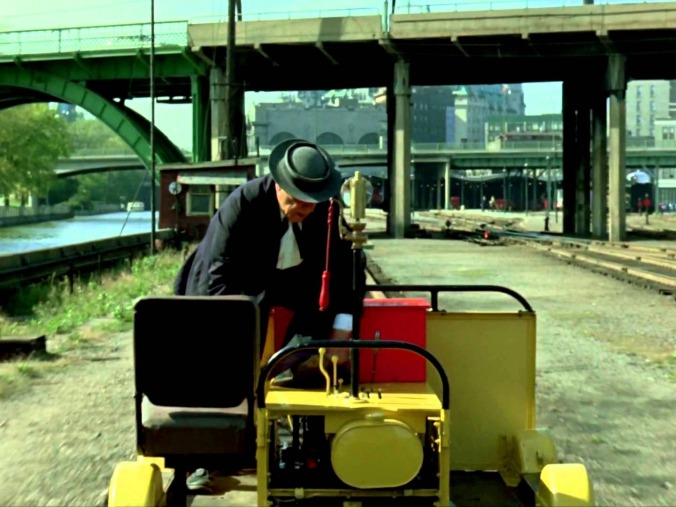
What Are You Watching? is a weekly space for The A.V Club’s staff and readers to share their thoughts, observations, and opinions on movies new and old.
And so this feature returns. Lately, I’ve been revisiting some of Buster Keaton’s silent comedies, an important part of any movie freak’s self-education. I was lucky to have been introduced to them early. Keaton’s gags and stunts, some of the most dangerous and elegant ever filmed, underpin a morbid and existentially ironic comic art. He’s an unlikely modernist clown—in some respects more vaudeville than his contemporary Charlie Chaplin, whose comedies were generally sincere, while Keaton’s were parodies, their occasional love-story plots undercut by sardonic punchlines. Expressionistically pale under the signature flat porkpie hat (made by cutting down a full-sized Stetson), the typical Keaton hero is determined and semi-oblivious. We’re invited to root for Chaplin’s Tramp or the assorted bespectacled all-American go-getters played by Harold Lloyd, but the Walter Mitty-esque romantic ambitions of Keaton’s characters are always the butt of the joke. He wants to be a detective, a cowboy, an entrepreneur, a hero, a man’s man.
But the world around his bumbling is ridiculous, too. It’s filled with mistaken identities (a recurring plot point), secret passages (ditto), overheated rivalries, useless do-it-yourself manuals, bogus self-improvement routines, and cons. The sham promises of melodramas, dime novels, and pre-Great Depression can-do play absurdly in the Keaton-verse. (Naturally, Samuel Beckett was a lifelong fan; he tried to get Keaton for the role of Lucky in the first American production of Waiting For Godot, and though the aging slapstick icon was initially put off by the writing, he ended up later starring in Film, Beckett’s only screenplay.) I can think of at least two Buster Keaton comedies that conclude matter-of-factly with his character’s death: the 1922 two-reeler Cops (which I re-watched recently) and the 1927 feature College.
One semi-obscure Keaton film I’d never seen before this week was The Railrodder, a charming promotional travelogue directed by Gerald Potterton (better known as an animator) for the National Film Board Of Canada in 1965, a year before Keaton’s death. (It’s free on YouTube, as are hundreds of other movies produced by the NFB since the 1940s.) A raisiny, paunchy, otherworldly silent visitor, Keaton sets off to “see Canada” by rail and ends up crossing the country from coast to coast, fiddling obliviously with bellows cameras and beaver-fur coats as his single-seat track speeder zips dangerously down the tracks. It’s not something I would offer as proof of Keaton’s genius, but it’s a genuine treat for fans—his last substantial comic role, and in a movie composed almost entirely in railroad tracking shots, to boot. Those who have some time on their hands can also check out the accompanying behind-the-scenes documentary, Buster Keaton Rides Again, in which the grouchy Keaton tolerates various polite Canadians in fly-on-the-wall black-and-white.